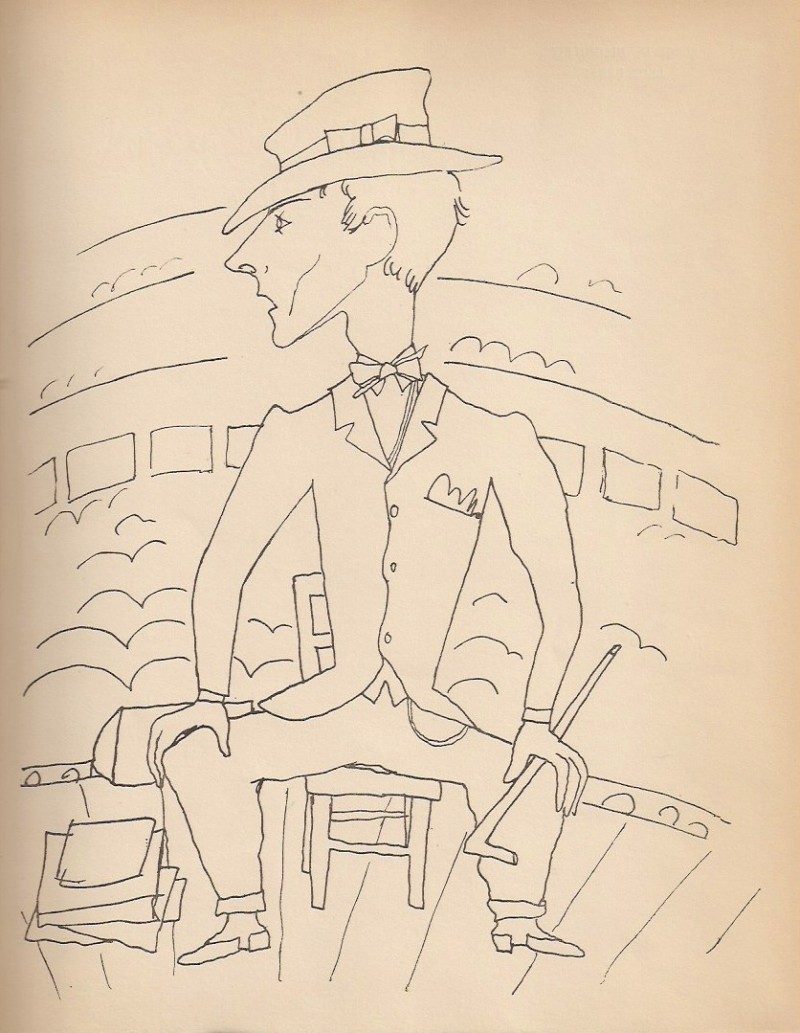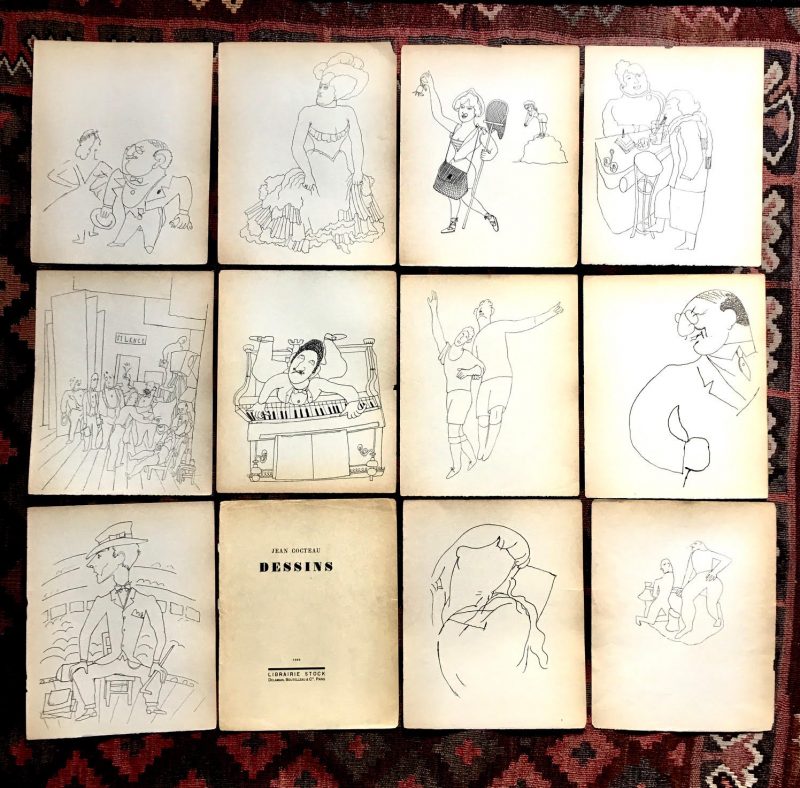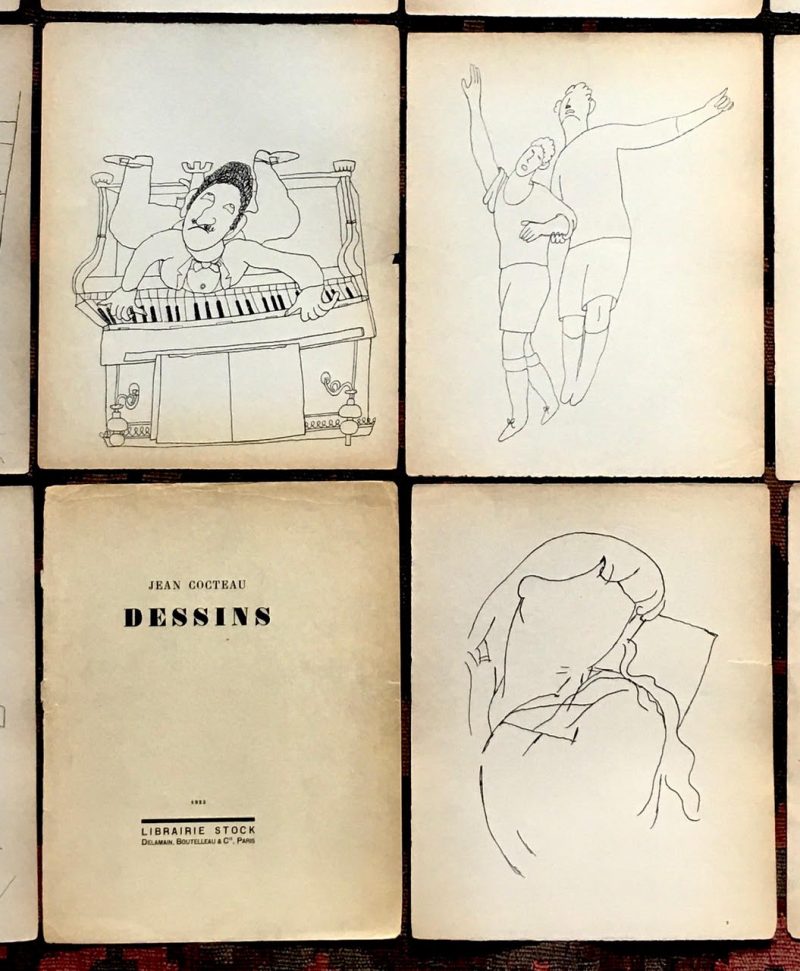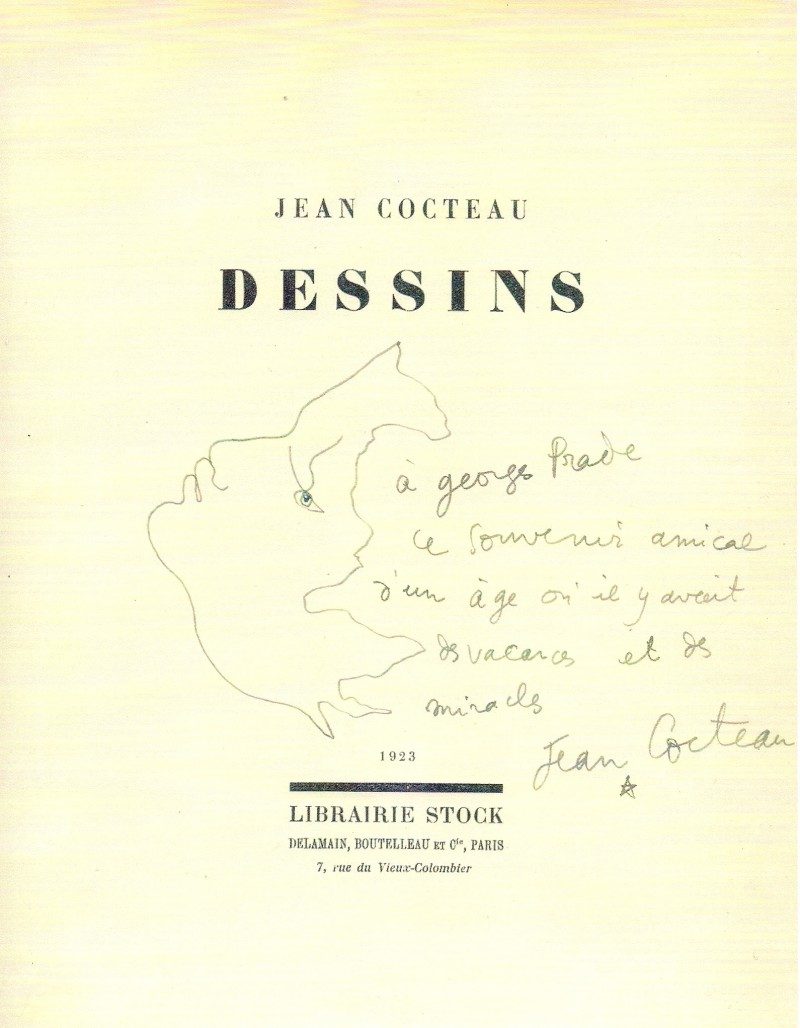“Auto Portrait au Theatre” Jean Cocteau, 1923
“Auto Portrait au Theatre” Jean Cocteau, 1923
Medium: Line cut / Date of Work: 1923 / Edition Size: 625 Printed
Signature: Unsigned Height (cm) 28 Width (cm) 22
Published as a series of line cuts of Cocteau’s early drawings, dedicated to Picasso with the apology: “Poets do not draw. They untie the knots in handwriting and then retie them differently.”
A line cut is printed from a letterpress printing plate made from a line drawing by a photoengraving process. Also called line engraving.
USD$225 each NOW USD$100
(Appraised at GBP$350 British Pounds / USD$425 )
See Market Value Research: https://www.goldmarkart.com/art-for-sale/l-amour-cerebral
See Same Print Here: https://www.goldmarkart.com/art-for-sale/les-coulisses-a-la-fin-du-spectre-de-la-rose
Jean Cocteau (5 July 1889 – 11 October 1963) was a French writer, designer, playwright, artist and filmmaker.
Rare Prints/Pages from Original 1923 Limited Edition Publication
Entitled ‘Jean Cocteau: Dessins’ (Librairie Stock, Delamain, Boutelleau et Cie, Paris).
From Book Originally Hand Signed By Cocteau to Georges Prade, 1923. (not for sale)
Acquired in New York City from Private Collection. 9 x 11 inches. Fragile, some aging. These are pages from this rare publication, sold separately.
Please ask for the condition of any print you are interested in as all have sepia toned color due to aging, and some have creases or small tears, due to the fragilty.
Jean Cocteau was an enormously influential French artist and writer known as one of the major figures of Dada and Surrealism. With an oeuvre that spanned painting, novels, poetry, plays, and films, Cocteau established himself as a leading creative force in Paris. A regular member of the avant-garde, he maintained long-term friendships with artists such as Pablo Picasso, Tristan Tzara, Francis Picabia, and Man Ray. “The job of the poet (a job which can’t be learned) consists of placing those objects of the visible world which have become invisible due to the glue of habit, in an unusual position which strikes the soul and gives them a tragic force,” he once mused.
Born on July 5, 1889 in Maisons-Laffitte, France, the self-taught Cocteau would regularly draw his friends and acquaintances in a distinctive, fluid style informed by his interests in Cubism, psychoanalysis, and Catholicism. “Poets don’t draw,” he once quipped about his artworks. “They unravel their handwriting and then tie it up again, but differently.” Among his best-known works is the novel Les Enfants Terribles (1929) and his critically acclaimed films le Sang d’un poète (Blood of a Poet) (1930), La Belle et la Bête (Beauty and the Beast) (1946), and Orphée (Orpheus) (1949).
Cocteau died on October 11, 1963 at the age of 74 in Milly-la-Foret, France. Today, his works are included in the collections of The Museum of Modern Art in New York, the National Gallery of Art in Washington, D.C., and the Courtauld Institute of Art in London, among others.



